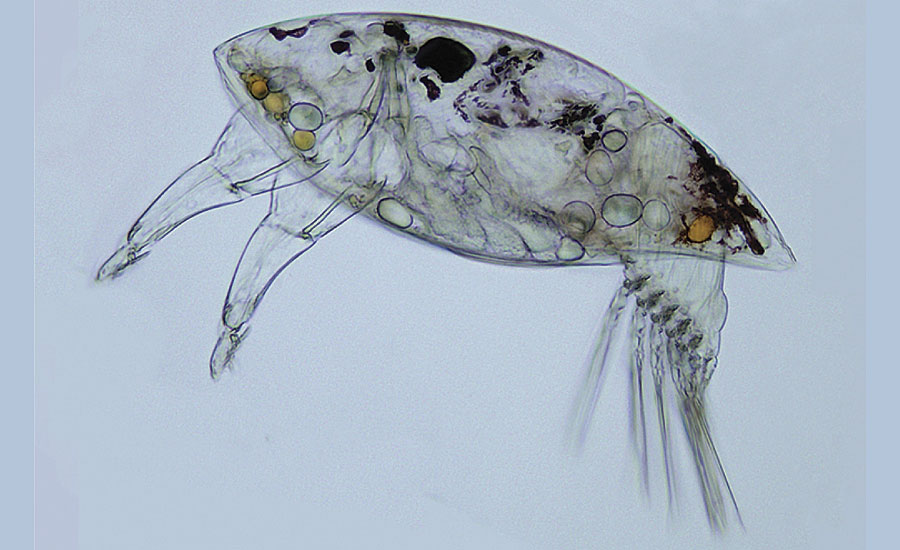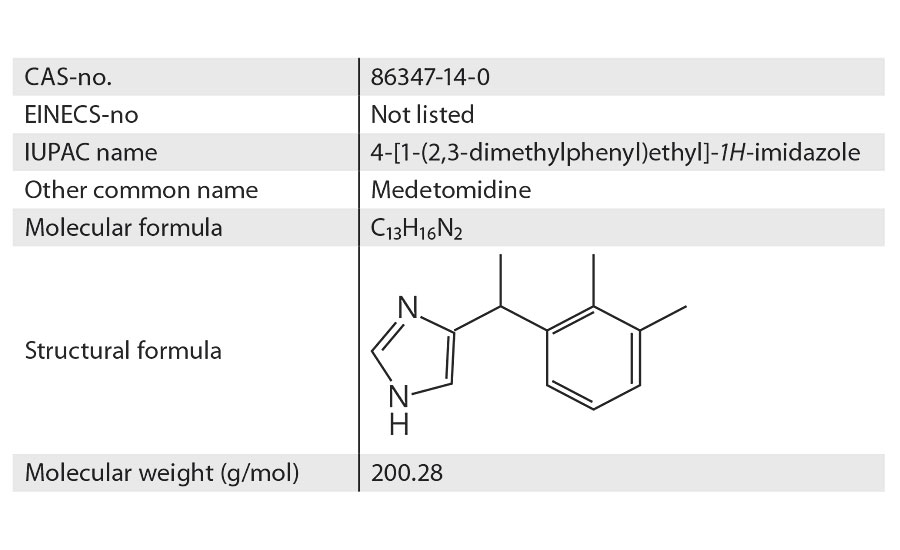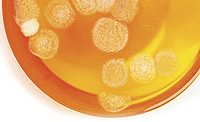Reducing Biocide Exposure Risk
During the Anti-Fouling Manufacturing Process

Since the worldwide ban of the use of tri-butyl-tin (TBT) in anti-fouling coatings in 2003, marine coatings manufacturers have been forced to reconstruct their paint formulations to accommodate different biocides, with copper designated as the favored candidate, supplemented by booster biocides. The palette of biocides available to paint manufacturers also faced new regulatory challenges in the shape of the EU Directive on Biocidal Products (98/8/EC). The impact of this Directive was a reduction in the number of certified biocides available for use in anti-fouling coatings to just 12 active substances. Shipping transportation is a globalized industry reliant on just-in-time delivery. Therefore, scheduling penalties, nor increased fuel costs are acceptable. An additional solution for barnacle fouling on ship hulls had to be found.
From R&D to Commercialization
In February 2000, biologists at the University of Gothenburg published a research paper on biofouling in Swedish waters. Researchers had been investigating how a range of substances that prevented the settlement of hard fouling when dissolved in seawater could be used. This research focused on the barnacle Amphibalanus improvisus and its colonization of man-made surfaces at the larval stage (Figure 1). The goal of the research was to discover adrenoceptor active compounds that manipulated the barnacle larvae’s behavior to inhibit invertebrate larvae from settling. Dahlström, et al. (2000) found that larval-stage receptors were remarkably responsive to one substance in particular - medetomidine (Table 1). This bioactive substance prevented barnacle larvae attempting to settle on a hard substrate. Medetomidine was also distinguished by its reversible effects. Larvae that came into contact with the substance could still later metamorphose into juvenile barnacles with no apparent ill effect.


In collaboration with two Finnish universities, Swedish researchers discovered that medetomidine could bind to a specific group of receptors, the octopamine receptors. The receptors were cloned, and the causality between the receptor and medetomidine was established. Further study led the researchers to link the binding to octopamine receptors to changes in the larval behavior at a surface. This explained the substance's high efficacy in preventing and deterring barnacle larvae when included in anti-fouling paint without it being toxic to the barnacles.
During initial panel testing, a further discovery was made. Remarkably, a polymer film containing medetomidine in a concentration equivalent to 0.02% by weight volume rejected 97% of the aggressive Barnacle improvus after two weeks, and 96% after four weeks. No other macro-fouling organisms were present at all. A further distinction pointed towards medetomidine’s potential for large-scale synthesis: its tendency to accumulate at the solid/liquid interface across the full extent of a surface.
These significant research findings catalyzed the development of the industry’s first biotechnology approach to biofouling prevention. I-Tech AB has since commercialized the use of medetomidine in marine coatings, owning all IP and regulatory rights to the anti-fouling agent under the brand name Selektope®. Today, I-Tech controls the largest and most efficient source of medetomidine production.
Medetomidine use is currently suited in coatings that are self-polishing or controlled depletion polymer types. It is a biocide that has highly favorable anti-fouling properties at low concentrations (nano Molar). To obtain full protection against barnacle fouling, 0.1-0.3% w/w of medetomidine should be used in a wet paint formulation. Just 2 grams of medetomidine is used per liter of paint, comparable to 500-700 grams of copper oxide used per liter of paint for barnacle attachment prevention.
Selektope (medetomidine) is supplied to the paint manufacturer in powder form. However, I-Tech advises its customers that in order to ensure continuous release and long-term performance, the biocide should be added as a solution in a suitable solvent. It is easier to get a homogeneous mixture in the paint if the product is used as a solution rather than added in its solid powder form. I-Tech also recommends that the biocide should be added early in the manufacturing process, rather than adding it post formulation.
Enhanced Safety
During paint production, protective clothing is used to ensure that production personnel are not exposed, a normal procedure for the handling of anti-fouling substances. Safety procedures during paint production and during application are well-designed to avoid exposure. For optimum safety, Selektope must be handled accurately, and appropriate personal protection procedures used. I-Tech ensures this by conducting regular manufacturer audits and by providing information on safe handling during paint manufacturing.
However, to further support enhanced safety during the anti-fouling coating manufacturing process, I-Tech has developed a unique, innovative solution for the dust-free administration of medetomidine into a liquid paint batch.
In 2018, I-Tech unveiled a game-changing packaging solution that challenges the status quo on how biocides are added during the paint manufacturing process. The drop-in, dust-free dissolvable expanded polystyrene (EPS) container packaging system allows paint manufacturers to add Selektope to paint in a sealed container without being opened. This enables the dust-free charging of 100% Selektope powder material to liquid paint, eliminating dust formation completely. The EPS container fully dissolves almost instantaneously without leaving any traces in the coating system. It also allows the paint manufacturer to make optimal use of the active agent and improves safety in the paint processing plant.
Each EPS container is supplied within a CurTec HDPE screw lid jar with locking mechanism, making it durable with improved impact resistance for transport. The complete EPS container system can hold 300-800 grams of Selektope (medetomidine) as a dry powder within a very low-weight (18 grams) EPS container (Figure 2).

The formal launch of the EPS container by I-Tech AB followed extensive testing, having been qualified for use during the manufacturing process without compromising paint performance. Since the polystyrene will become an integral part of the paint system, a special-grade EPS quality was used that is fully approved in paint formulations of several global paint companies. In addition, complete dissolving of the EPS supports waste reduction and increasing effective use of Selektope.
In recent years, I-Tech has been successful in scaling up the production of its unique technology from quantities measured in kilos to a robust manufacturing platform producing at multiple tons scale. This latest biocide packaging innovation from I-Tech supports customers in the safe use of Selektope and is a game changer for the addition of biocides during the paint manufacturing process. It also supports the increasing uptake of this breakthrough technology in the market.
Proven Performance
Over 300 ships have been coated with anti-fouling paints containing Selektope since the launch of the technology into the marine market. Just recently, Bermudan tanker owner and operator Team Tankers International announced that they have committed four additional ships to using the protection of the anti-barnacle active agent Selektope following distinguished hard fouling prevention performance during a 40-month trial of an anti-fouling coating containing the technology on an MR tanker in their fleet.
The vertical sides of the 46,067 DWT chemical and products carrier Team Calypso were coated with Chugoku Marine Paints’ SEAFLO NEO CF-Premium anti-fouling coating that contains Selektope during its five-year drydocking at the Sembcorp shipyard, Singapore in 2015.
During the last 40 months, the MR tanker has been in active operation across a wide range of trade routes globally, often sailing in global biofouling hotspots with > 25 °C (up to 32 °C) water temperatures where the risk of biofouling is very high. The vessel has also spent several extended periods idling in these zones.
However, during the trial, barnacles failed to anchor themselves to the tanker’s hull thanks to the protection from Selektope, which activates the barnacle larvae’s octopamine receptor, keeping them in swimming mode and preventing them from attaching to the hull with non-fatal effect. A hull inspection conducted at month 35 in the tanker’s in-water-survey schedule established that Team Calypso’s hull was virtually barnacle free with no soft fouling coverage.
Independent third-party data analysis has also verified the fouling prevention performance of the Selektope-powered hull coating. At month 40, total added resistance on Team Calypso’s hull and propeller due to fouling is exceptionally low, at 16%, compared to up to 30% expected for a reference ship of similar age, size and trading patterns. Of that 16% total, added resistance on the hull accounted for 10% whereas added resistance on the propeller accounted for the remaining 6%. The development of added resistance was calculated at a rate equivalent to 0.4% per month, compared to the expected rate of between 0.5% and 1.5%.
Conclusion
With multiple major coatings suppliers now turning to Selektope to enhance the hard fouling prevention offered by their anti-fouling products, ship owners are encouraged to check whether this unique active agent is present in the anti-fouling systems being considered during their coating selection process.
What to Read Next:
Jotun Unveils Next Generation of SeaForce Biocidal Antifouling Range
Looking for a reprint of this article?
From high-res PDFs to custom plaques, order your copy today!






